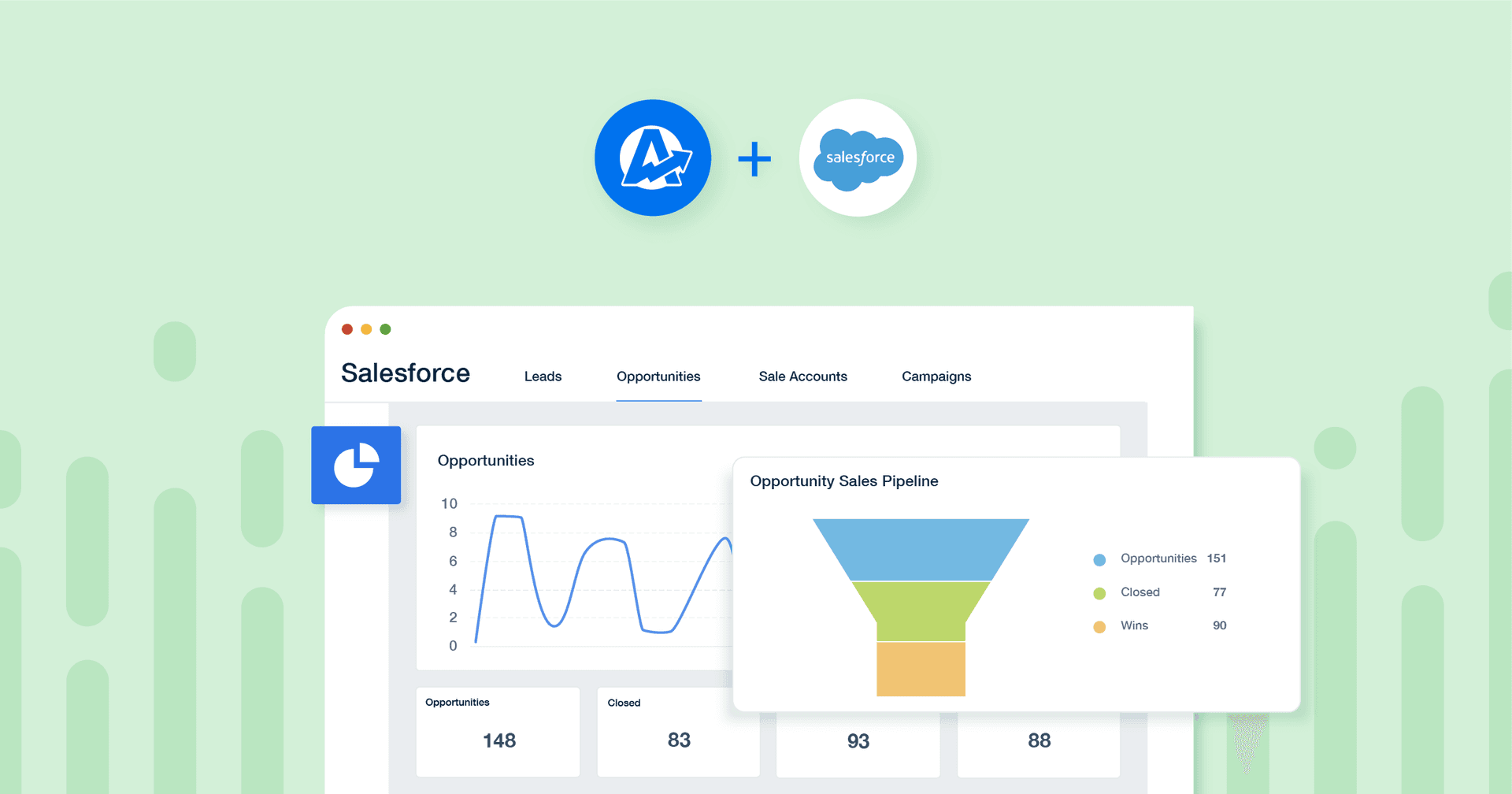Table of Contents
Table of Contents
- The Complexities of Agency Lead Generation
- Is Inbound or Outbound Better for Lead Generation Efforts?
- Why Agencies Need an Established B2B Lead Generation Process
- What Is a B2B Lead Generation Report?
- Key Components of Reports Used for Lead Generation
- How To Set Up Proposal Templates in AgencyAnalytics
- The Takeaway
7,000+ agencies have ditched manual reports. You can too.
Free 14-Day TrialQUICK SUMMARY:
Lead generation for marketing agencies involves identifying target audiences and implementing engagement strategies across various channels like content marketing, digital advertising, and social media. The aim is to create a continuous flow of interested parties for the agency's services, crucial for sustaining business growth and competitiveness. This guide provides tools and strategies for strengthening your agency's lead generation efforts, including a customizable proposal template and effective techniques to increase leads.
According to the 2023 Agency Benchmarks report, client acquisition is a major challenge for 37% of marketing agencies. In a marketplace saturated with competitors, drawing in new clients is a pivotal concern for marketing agencies.
This guide will provide you with tools to fortify your agency’s lead generation campaigns, including a ready-made template for creating your own customized lead generation proposal. We’ll also discuss lead generation strategies to help you land more prospects and grow your agency–without having to outsource to a B2B lead generation company or sales team. 😏
The Complexities of Agency Lead Generation
Generating qualified leads is no easy feat.
Even if you’re not you’re a B2B lead generation agency yourself, you still need to attract clients of your own, keep your sales funnel full, and generate sales leads to grow your client base. So if you want to scale with the right clients, you need to create an in-house lead generation service!
Before we get into the nitty-gritty of what you need in your lead generation proposal to turn more leads into paying customers, let’s review how qualified lead generation works inspired by top lead generation companies and lead gen agencies.
1. Identify the Target Audience Before Generating Leads
Most lead generation companies know that identifying your ideal clients is the first step in the B2B lead generation process. For agencies, this entails identifying businesses or individuals who are in need of the services you offer.
This could be through market research, analyzing current client demographics, and understanding the industries you serve best. Whether you have sales and marketing teams or a dedicated management team in charge of this, the entire agency should have a clear understanding of who their ideal client is.
By zeroing in on a specific target audience, you ensure that your leads generated are actually prospects most likely to convert.
Some of the best B2B lead generation tactics involve focusing on a specific niche that clearly sets your agency apart from the competition. So if your audience is too broad, you might not be able to attract the right leads, so consider choosing a niche.
We form new relationships (both referral and client) and grow constantly. Ultimately, these new relationships continue to fuel our constant success in the field. Without the focus on this specific niche, it would have been much more difficult to earn the strong reputation we have that earns those relationships.
Nick Fitzgerald, President at AuDSEO
2. Creating Compelling Content and Offers to Attract High Quality Leads
Once you have identified your target audience, the next step is to create content that resonates with them. Otherwise, you have yourself a bunch of invalid leads.
Content marketing plays a huge role here, including the creation of blog posts, whitepapers, case studies, webinars, and more. Alongside content marketing, compelling offers such as free consultations, service discounts, or downloadable resources are some of the best lead generation tools that attract qualified prospects over time.
The content has to resonate, or it isn’t demand generation now, is it?
3. Leverage the Right Digital Marketing Channels for Lead Research
Once you have your materials, you need to reach your audience where they’re at, or you won’t generate leads. These could include social media marketing, email marketing, SEO, and paid advertising.
The goal is to use these channels to distribute your content to optimize your sales strategy and boost your lead conversion rate.
Agency Tip: Don’t get stuck in vanity metrics. Track the success of each social media channel by already beginning to use lead scoring data. Let’s say for instance, when potential leads DM your agency’s Instagram account: assign a score and count the number of leads delivered through each channel.
4. Treat Your Agency Like Its Own Lead Generation Company
Lead generation techniques can get quite granular. So when potential leads interact with your content or offers, you need scalable mechanisms to capture their information just as the best lead generation companies do.
This is where lead generation software becomes invaluable. Do you think lead gen agencies do everything themselves? Think again. If you’re going to act like a lead gen company to get yourself more leads, you need to start using:
Landing pages with forms,
Chatbots, and
Sign-up sheets that capture information such as names, email addresses, and phone numbers
The whole shebang. This will help you capture the contact details and personal data that will not only feed into your lead gen research but also help you craft your proposal (but beware of data protection rules when doing so).
5. Nurture Active Leads
For your lead generation marketing to work, you need to have your agency’s sales teams identify sales triggers and nurture your generated leads. Remember: act like a lead gen company with its own sales team.
At this stage, your agency needs to focus on building relationships and cultivating trust with your leads. But first, assign your in-house digital marketing specialist to set up some sales triggers to improve your sales and marketing teams’ account based marketing strategies! This involves:
Engaging with quality leads through various communication channels,
Providing them with more information about your services, and
Addressing any queries or concerns they might have.
Read more: How Often to Email Your List
6. Convert Your High Quality Leads to Clients
Generating leads is no easy feat. So if you’ve come this far, the majority of the pressure sits on your sales team. After all, the ultimate goal of B2B lead generation is to convert leads into paying clients. This involves further discussions, proposals, and possible negotiations.
At this stage of your B2B lead generation journey, it’s important to demonstrate the value your agency brings to the lead's business and implement your account based marketing knowledge to specifically address the specific pain points of your qualified lead.
Agency Tip: Have your sales team speak with the key decision makers at the company to reduce friction.
7. Analyzing and Optimizing B2B Lead Generation Campaigns
Finally, it is important to analyze the performance of your lead gen efforts. Use analytics to understand which channels and content are most effective in generating B2B leads and continually optimize your strategies for better results.
Remember, you won’t come up with the best lead generation techniques for your agency until you optimize your lead gen tactics and iterate to get the best results. This step is vital to ensure the sustainability and effectiveness of your B2B lead gen efforts.
Is Inbound or Outbound Better for Lead Generation Efforts?
Choosing the right B2B lead generation strategy for your agency can be daunting, as both inbound and outbound strategies have their own set of advantages and challenges to attracting and converting qualified leads.
Inbound strategies are often more cost-effective client acquisition strategies and can create lasting relationships with clients, but they usually take longer to show results.
On the other hand, outbound strategies can generate leads quickly, but they can be more expensive and offer lower conversion rates.
This table compares inbound and outbound lead gen strategies:
| Inbound B2B Lead Generation | Outbound B2B Lead Generation |
|---|---|---|
Definition | Attracting prospective clients by creating content and campaigns that draw them in. | Proactive outreach to potential clients through direct contact. |
Pros | Builds lasting relationships, often more cost-effective, positions your agency as an authority | Generates leads quickly, directly targets potential clients |
Cons | Generally takes longer to show results | Can be more expensive, have lower conversion rates and may be seen as intrusive |
Examples | Content marketing, Search Engine Optimization (SEO), Social Media Engagement, Webinars and Events | Cold Calling, Email Campaigns, Trade Shows and Conferences, and Paid Advertising |
Ideal For | Agencies with limited budgets or those looking to build long-term relationships with clients. | Agencies with larger budgets for advertising or those looking to quickly expand their client base. |
Target Audience Focus | Engaging individuals who have shown interest or are actively looking for your services. | Reaching out to a broad audience, regardless of prior interest in your services. |
Interaction Type | Two-way interaction: You provide value and invite potential clients to come to you. | One-way interaction: You reach out to potential clients. |
Often, a combination of both inbound and outbound B2B lead generation is the most effective way to build a diverse and sustainable client base for your agency.
Interestingly the 2023 Agency Benchmarks report found that 45% of agencies rely on referrals from existing customers and word-of-mouth to acquire new clients.

Other methods agencies commonly use to acquire B2B leads are:
SEO and Content
Digital Advertising
Social Media
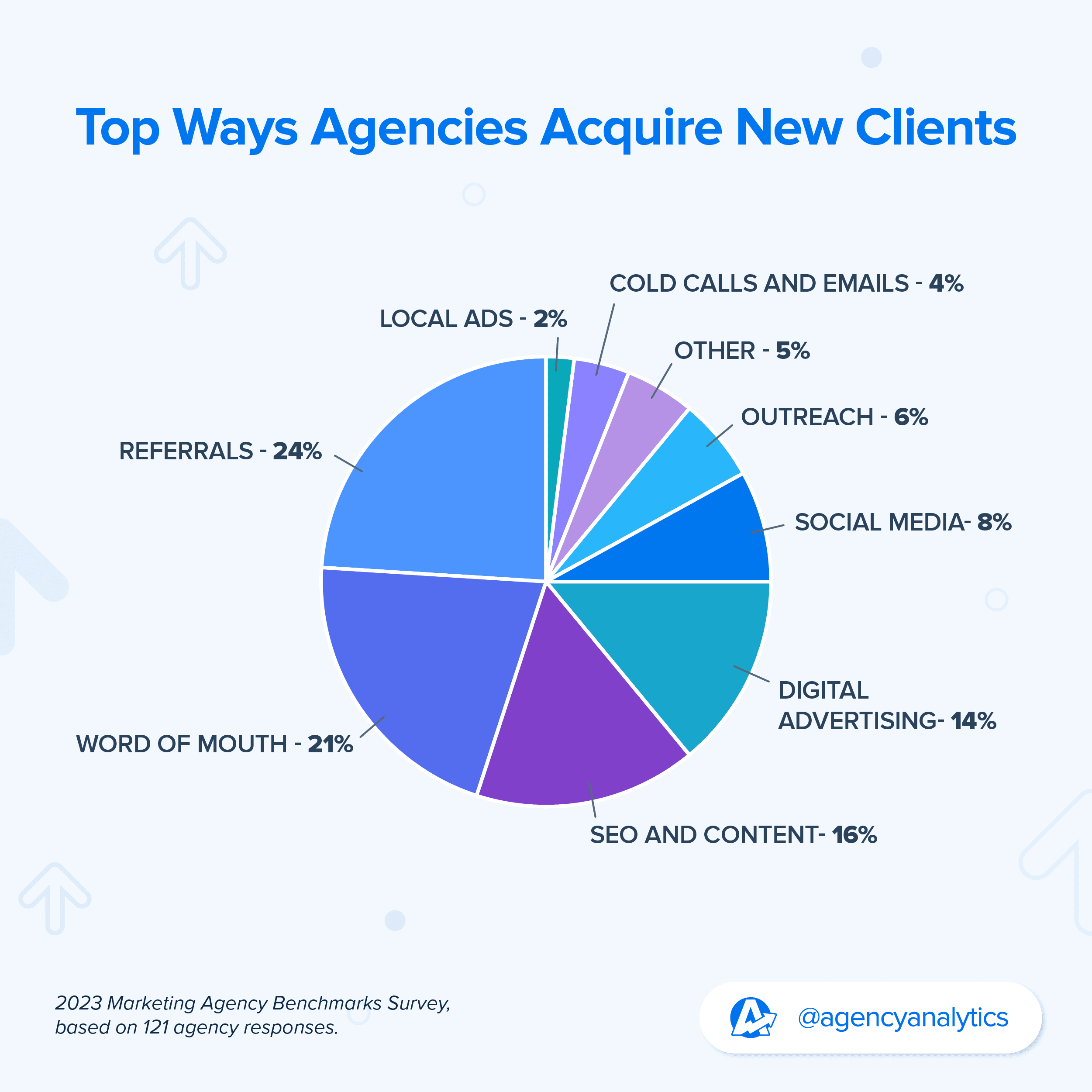
Ultimately, the best approach for your agency depends on your target audience, resources, and goals. From there, the question becomes: what’s the best way to close on a lead once you’ve landed it?
This brings us to the need for a tried and tested approach to creating the perfect B2B lead generation proposal template for your agency.
Why Agencies Need an Established B2B Lead Generation Process
Lead generation reports are an indispensable tool for agencies to not only attract new B2B leads but also to establish a foundation for successful and lasting agency-client relationships. Essentially, without one, your B2B lead generation strategies won’t provide consistent results as you scale your agency.
Here are eleven reasons lead generation proposal templates positively increase your chances of converting qualified leads into clients:
1. Establishing Credibility: By presenting well-structured and insightful data, lead generation reports help agencies establish credibility and showcase their expertise.
2. Clear Communication of Expectations: These reports allow agencies to communicate clearly what a B2B lead expects in terms of services, timelines, and results, helping to build trust from the outset.
3. Personalization for Targeted Appeal: Agencies personalize lead generation reports to address the specific needs and challenges of each B2B lead, making the proposal more relevant and appealing.
4. Demonstrating Value Proposition: Through lead generation reports, agencies effectively demonstrate the value they bring to the table and how they contribute to a client's growth and success.
5. Strengthening Your Sales Pitch: A well-crafted report acts as a powerful sales tool, providing a far more professional and comprehensive pitch than a simple email or phone call.
6. Facilitating Decision-Making for Prospects: By providing all the necessary information and insights in a structured format, lead generation reports make it easier for potential customers to make informed decisions.
7. Increasing Conversion Rates: With targeted, personalized, and value-rich proposals, agencies improve their chances of converting leads into paying clients.
8. Building a Repeatable Process: Once the templates are optimized, digital agencies have a marketing automation system to streamline future lead generation.
9. Enhancing Your Agency’s Brand Perception: Quality lead generation reports enhance the perception of an agency’s brand by acting as lead magnets at the top of the funnel, reflecting professionalism and attention to detail.
10. Providing Data-Driven Insights for Strategy Optimization: The data and insights gathered for these reports also be used internally to refine the agency’s strategies for client acquisition and service delivery.
11. Agency Growth: Of course, the main reason for having a B2B lead generation process is to give your sales team more leads and land more clients.
AgencyAnalytics gives RiZen Metrics the opportunity to show clients real-time reporting on all aspects of their current marketing strategy. There's trust that comes with the agency/client relationship when you offer complete transparency instead of just a white sheet once a month with some numbers on it.
Brooke Lamberti, Director of SEO, RiZen Metrics
What Is a B2B Lead Generation Report?
A B2B lead generation report is a tool used by marketing agencies to measure and analyze the effectiveness of lead generation activities.
There are two types of lead generation reports at marketing agencies:
1. A Metrics-focused report that measures lead activity and includes data from platforms like HubSpot or Google Analytics, and provides insights on lead goals, conversion rates, website traffic, and campaign performance.
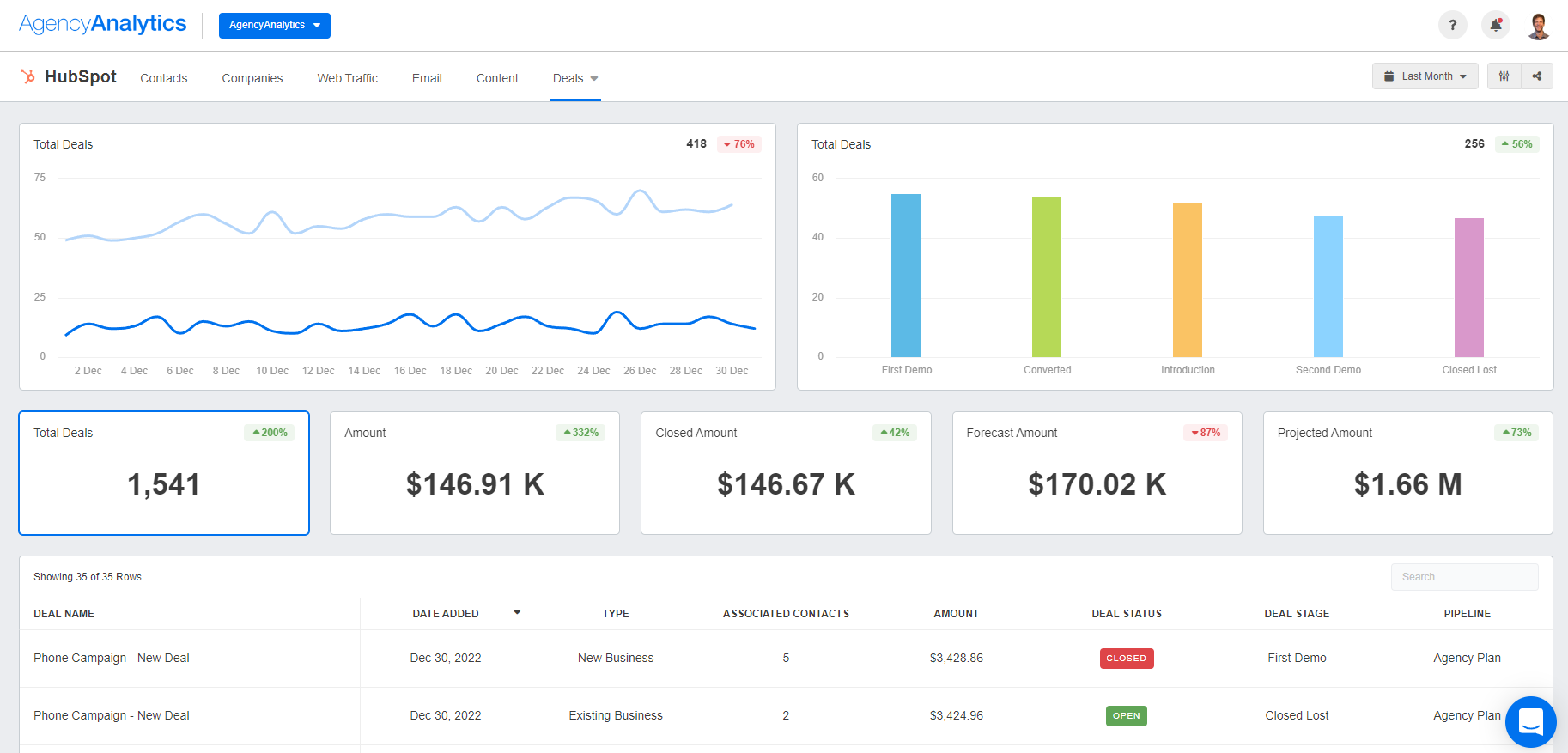
2. An Overview report that is used to convert new leads. It provides a high-level summary of lead generation strategies, objectives, and results.
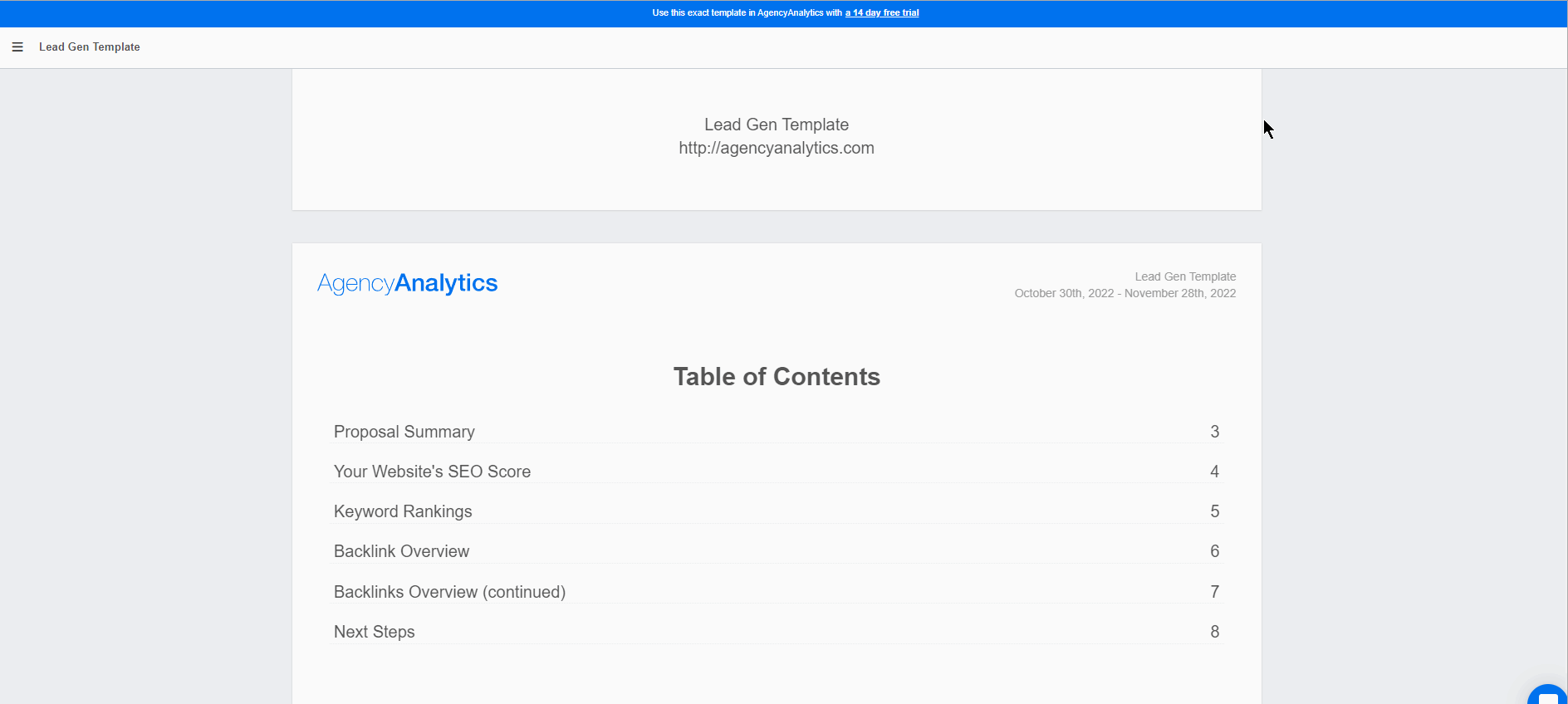
The second is a report that is used to generate leads for your agency. This is essentially equivalent to a lead gen proposal template which we will discuss further. Its purpose is to:
Paint a vivid picture for the prospect of how your agency is experienced at solving their problems
Show that your agency is not just a service provider but a partner that will provide a solid ROI
Clearly establish expectations, including deliverables, timelines, and budget
Land more clients with a strengthened sales pitch that lets the data do the convincing
Key Components of Reports Used for Lead Generation
With this foundation in place on what a well-crafted B2B lead generation report looks like, let's delve into what to include in your lead generation report to make it truly resonate with your prospects.
1. Executive Summary
First and foremost, your lead generation report should have an introduction and summary of your services. This section sets the stage by providing an overview of the report. It succinctly communicates what the prospect can expect to find in the document and why it is essential for them.
Agency Tip: Introductions should be relatively brief as prospective clients ultimately just want to know how your agency will help them grow their business.
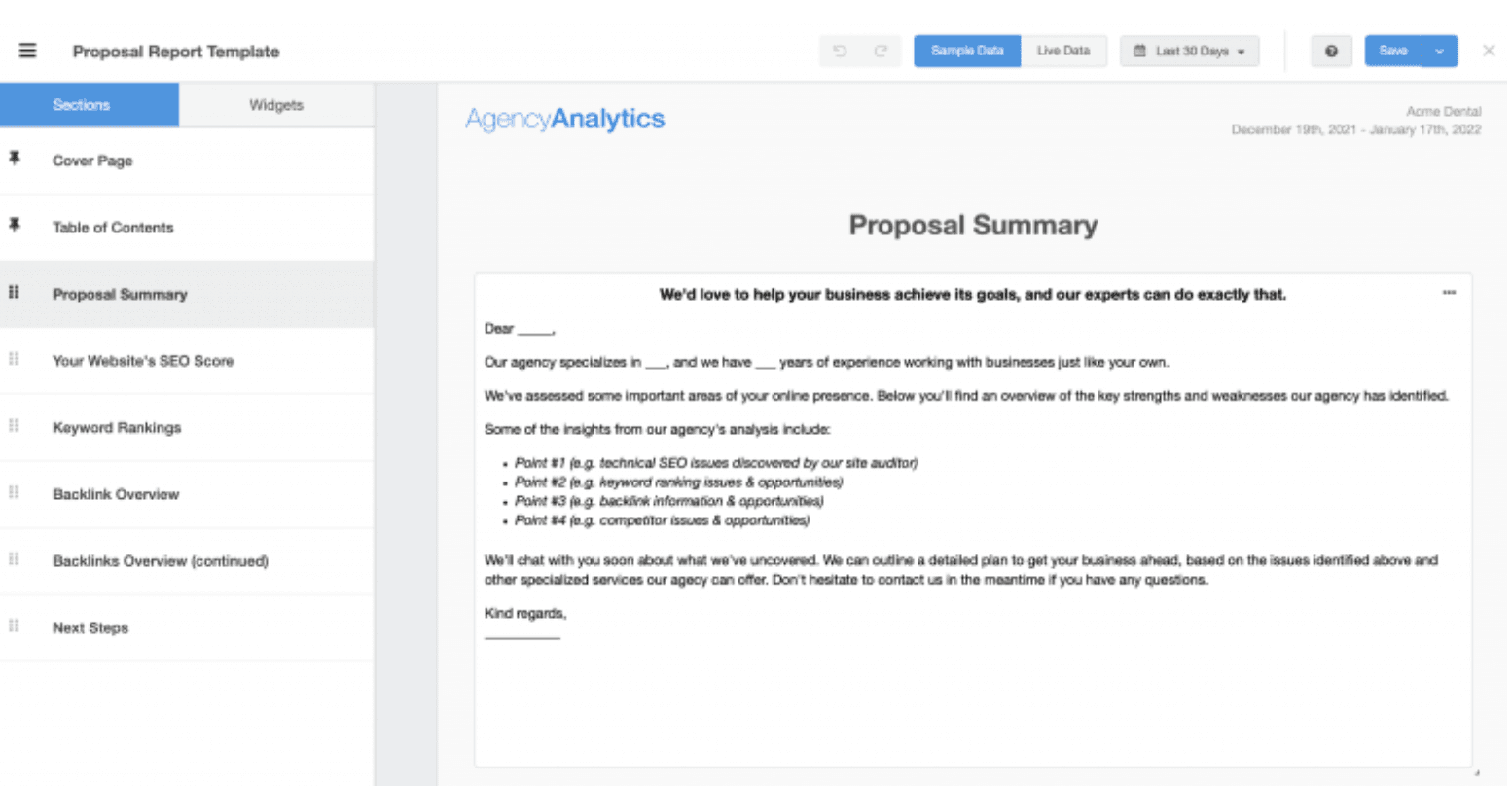
2. Agency Expertise and Credentials
Here, you establish the authority and credibility of your agency by highlighting its expertise, experience, achievements, and any accolades or testimonials. This works wonders at convincing new leads who have purchase intent later down the customer journey. Not only does it humanize your agency, but it also builds trust.
3. Client’s Challenges and Opportunities
This segment should focus on the prospective client’s pain points and challenges, but more importantly, it should elucidate the opportunities that lie ahead and how your agency unlocks them.
Common client challenges you can highlight include:
Limited internal resources to keep up with the demands of changing digital marketing agency trends
Lack of a cohesive and consistent brand message across various marketing channels
Inability to effectively reach and engage target audiences
Uncertainty about the return on investment (ROI) for marketing initiatives
Pro Tip: Include SEO Insights to Highlight Quick Wins
If applicable to your prospective client, you may also want to consider adding a section for SEO insights as part of your nurturing process. Whether or not your agency plans on providing SEO services, it’s your chance to show prospects that you've done your research by sharing the specific insights you've gathered about their current performance.
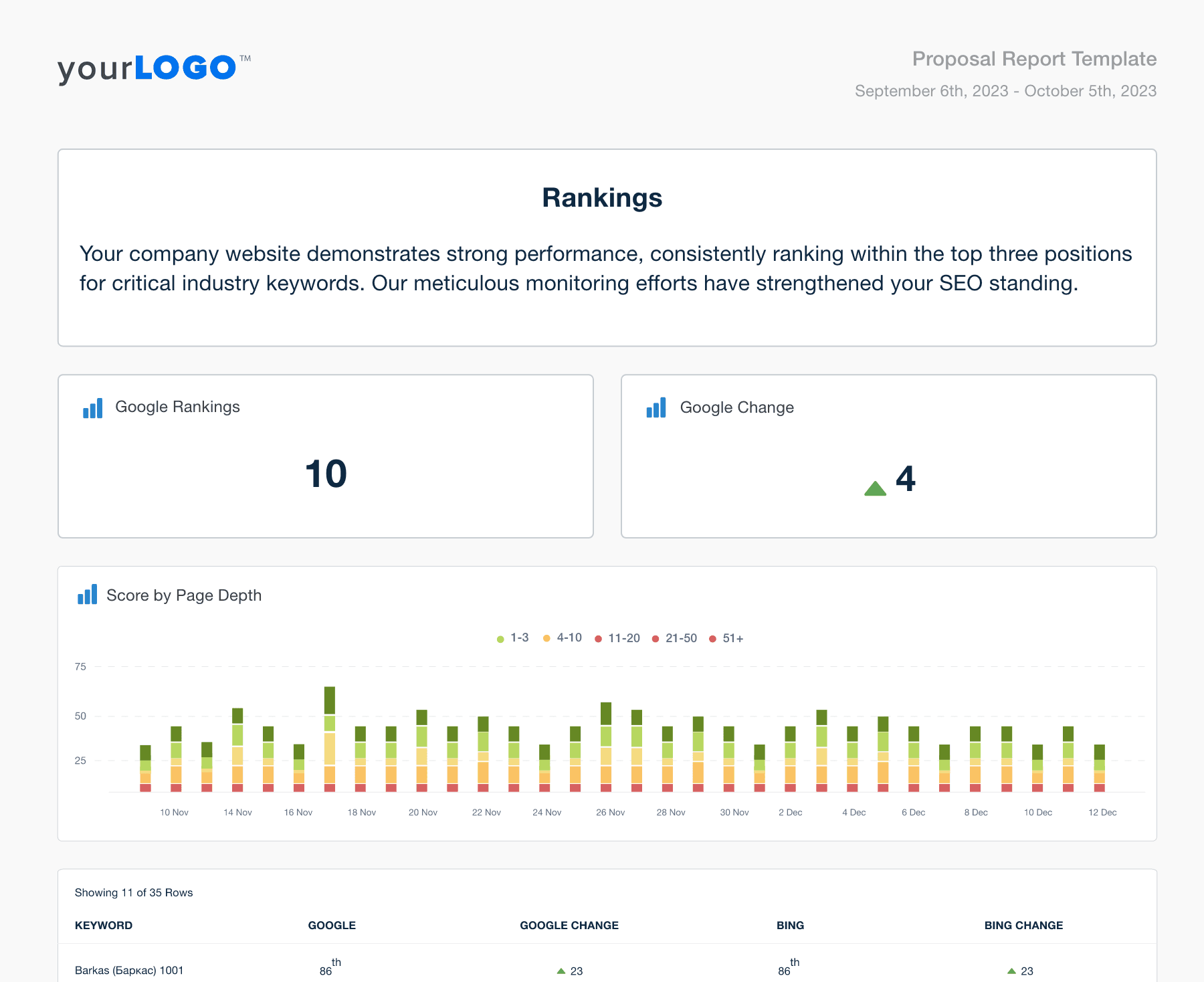
Try this SEO proposal template with your free AgencyAnalytics 14-day trial!
Although this section will include some personalization (which many marketers might shy away from this early in the game), with SEO reporting software or lead generation software, the process is largely automated. It’s a great way to build trust and credibility, as it shows you've taken the time to understand and research their business.
A few key SEO insights to share with prospects include:
Their current keyword rankings to be compared against industry benchmarks
A technical SEO site audit
An overview of their backlink profile
(For more tips, check out How To Create a Winning SEO Proposal).
Here's what to do:
Leverage SEO reporting tools and pre-built SEO report templates to quickly analyze a prospect’s current performance in organic search. In order to use all the SEO tools inside your lead generation report, simply navigate to Integrations and enable them:
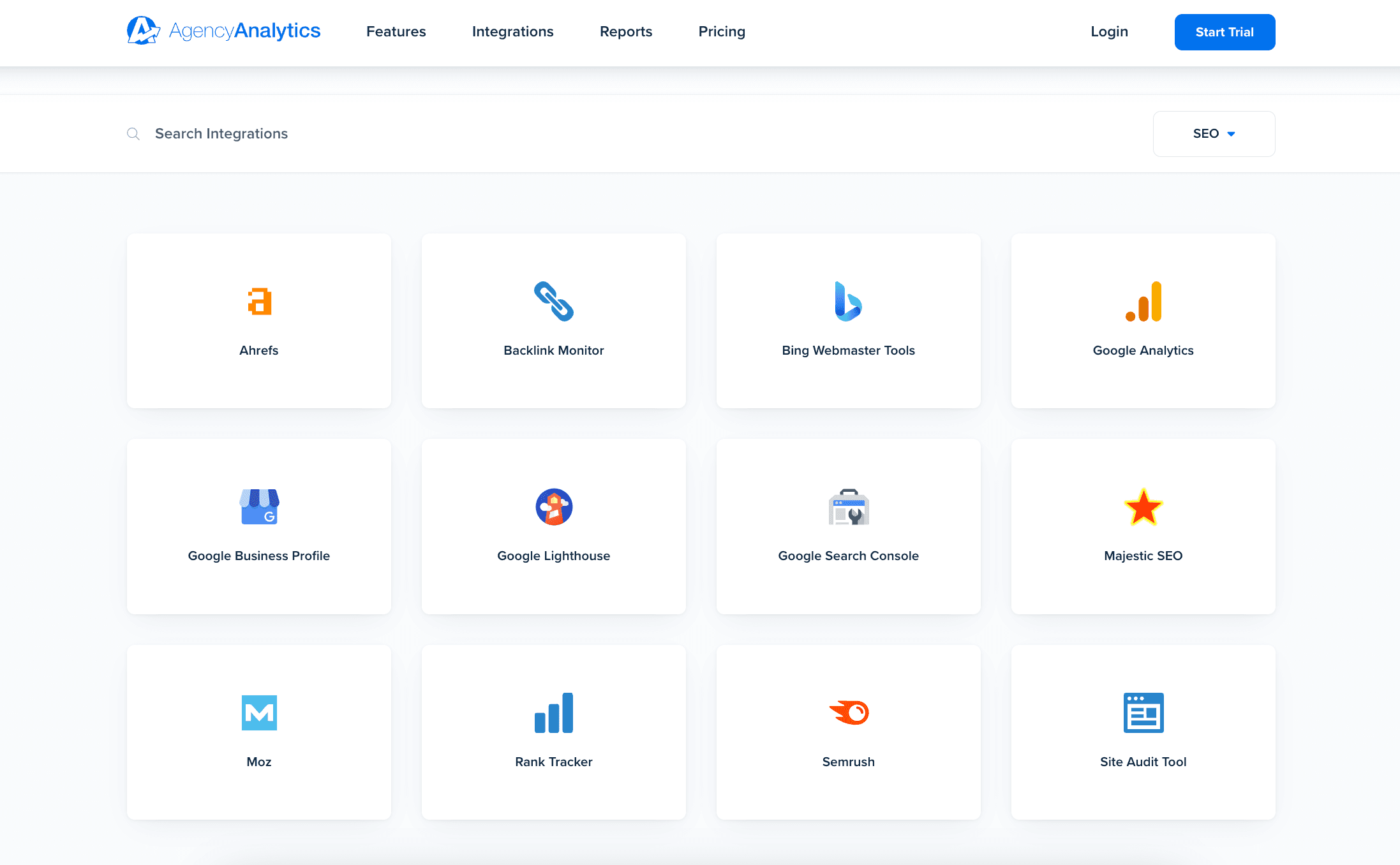
After enabling the SEO integrations, use a site audit tool to scan for technical on-site issues and give clients an overview of their site score and identify any errors, warnings, or critical issues.
The next SEO insight provided in the template is the Keyword Rankings section, which tracks exactly where your prospect’s site appears in search engines including Google, Google Maps, and Bing. This section is an excellent opportunity to show clients how optimizing their existing keyword rankings could impact their site traffic and bottom line.
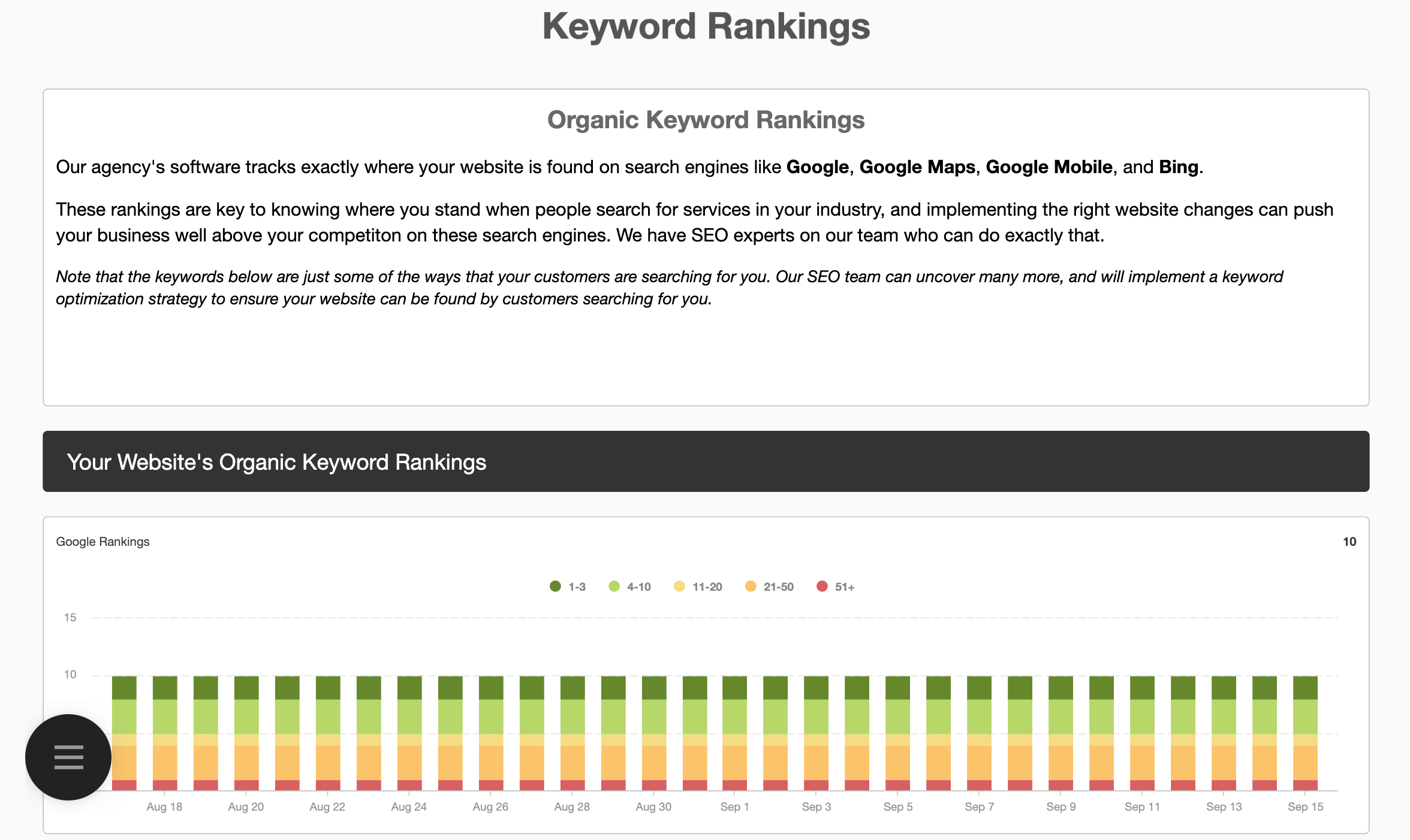
The next two pages are focused on the backlink profile of your prospect, which provides a backlink analysis from our Majestic integration, including new and lost list, domain anchors, and more advanced backlink metrics such as Trust Flow and Citation Flow.
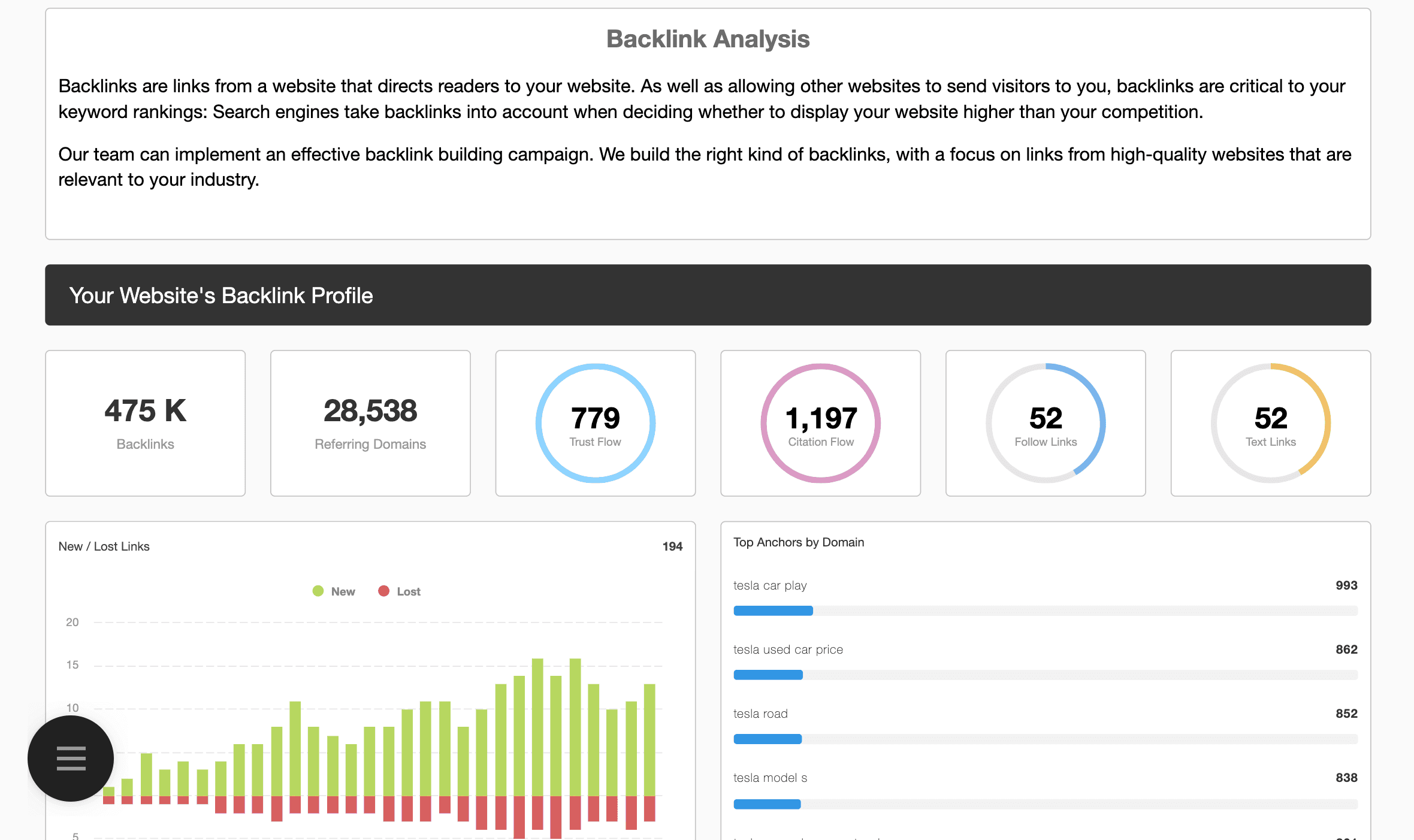
4. Tailored Solutions and Strategies
This is where the magic happens. After providing your initial insights, detail the bespoke solutions and strategies that your agency has developed specifically for the prospect.
Illustrate how these strategies align with the client's goals and how they will address the challenges identified. For instance, outline the exact tasks and deliverables that you’ll be doing as part of their SEO campaign. Highlighting your key services and deliverables set the right expectations with the prospect, as they’ll know exactly what you will be doing for them.
5. Value Proposition and ROI
Before you can show your campaign success to clients, you’ll need to prove your mastery of data-driven marketing.
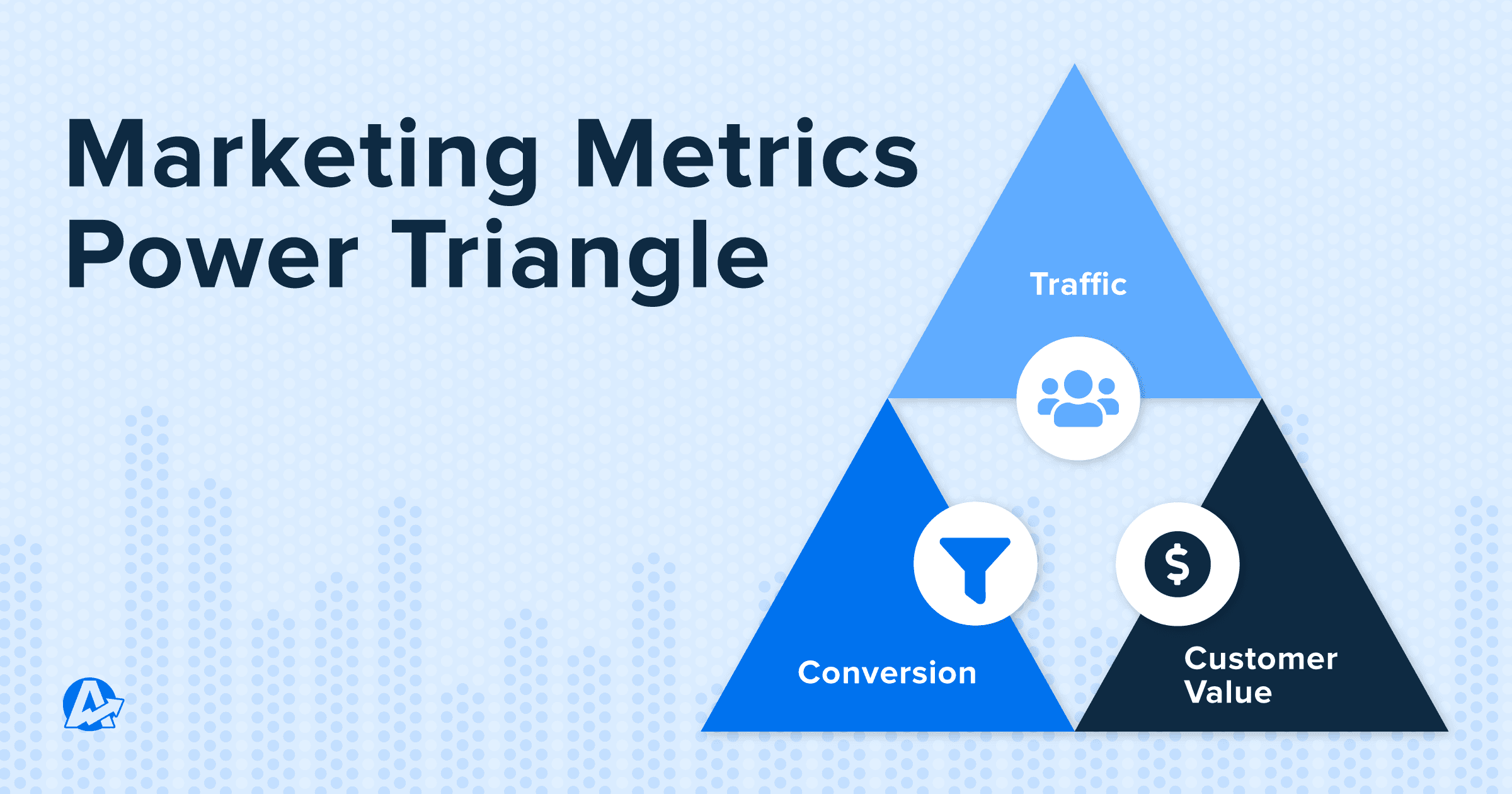
Whichever framework you use, whether the power triangle or the PESO model, clearly explain the unique value proposition of your agency and how the services you provide will generate a return on investment for the client.
Agency Tip: Use sample dashboards from past campaigns to show off your white label reporting platform. This will solidify your credibility as a data-driven agency.
6. Timelines and Expectations
After highlighting your key services and deliverables, clearly outline the timelines for the execution of different strategies and when the client can expect to see results. This is key to setting realistic expectations, as many services like social media marketing and SEO take time to build up, so you’ll need to be prepared to continually prove your worth.
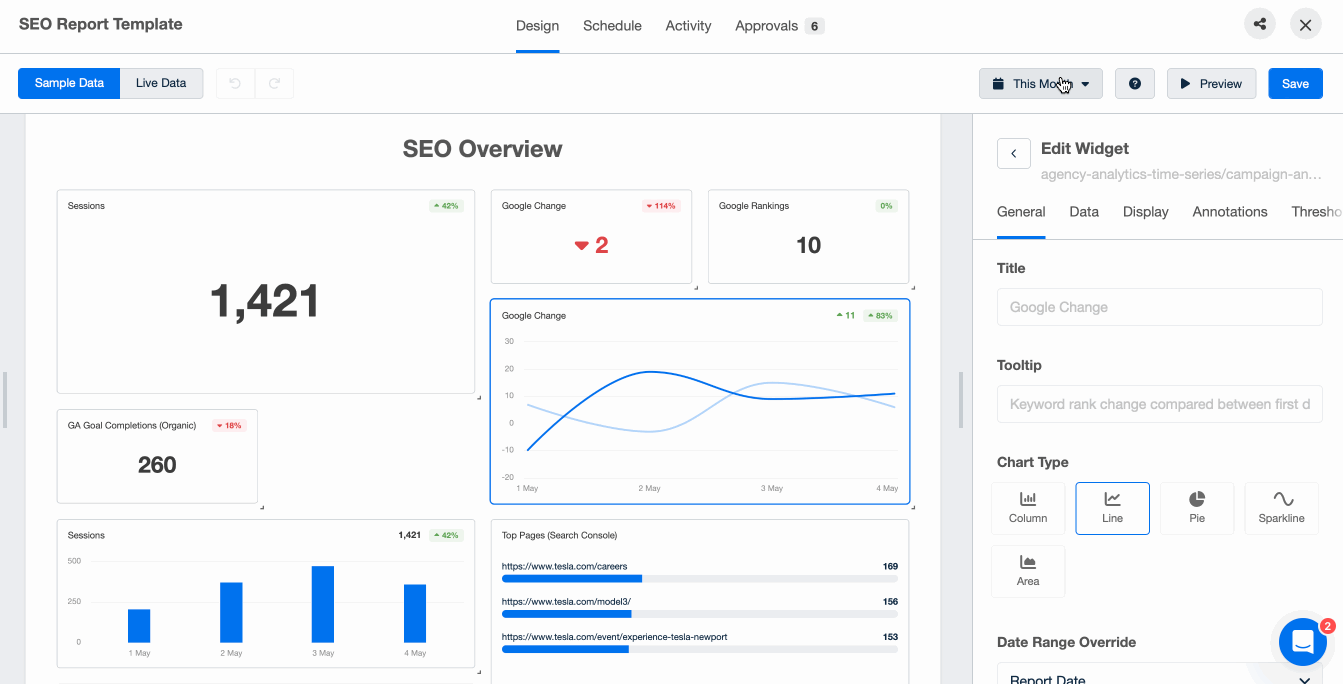
Zoom in and out of date ranges to clearly show your agency’s impact over time. Try AgencyAnalytics free for 14 days.
AgencyAnalytics takes a topic (data/metrics) that can be confusing for clients to understand and presents the information in a clean, digestible way. This clarity sets our team members up for success as they walk clients through our performance and ROI for their investment.
Jessica Weiss, Director of Marketing & Strategic Partnerships, One Firefly
7. Next Steps and Call to Action (CTA)
Finally, you’ll want to outline the pricing of your services and the next steps. In terms of agency pricing, it’s typically best practice to frame it as an investment, assuming your services will help them grow their business and generate more revenue.
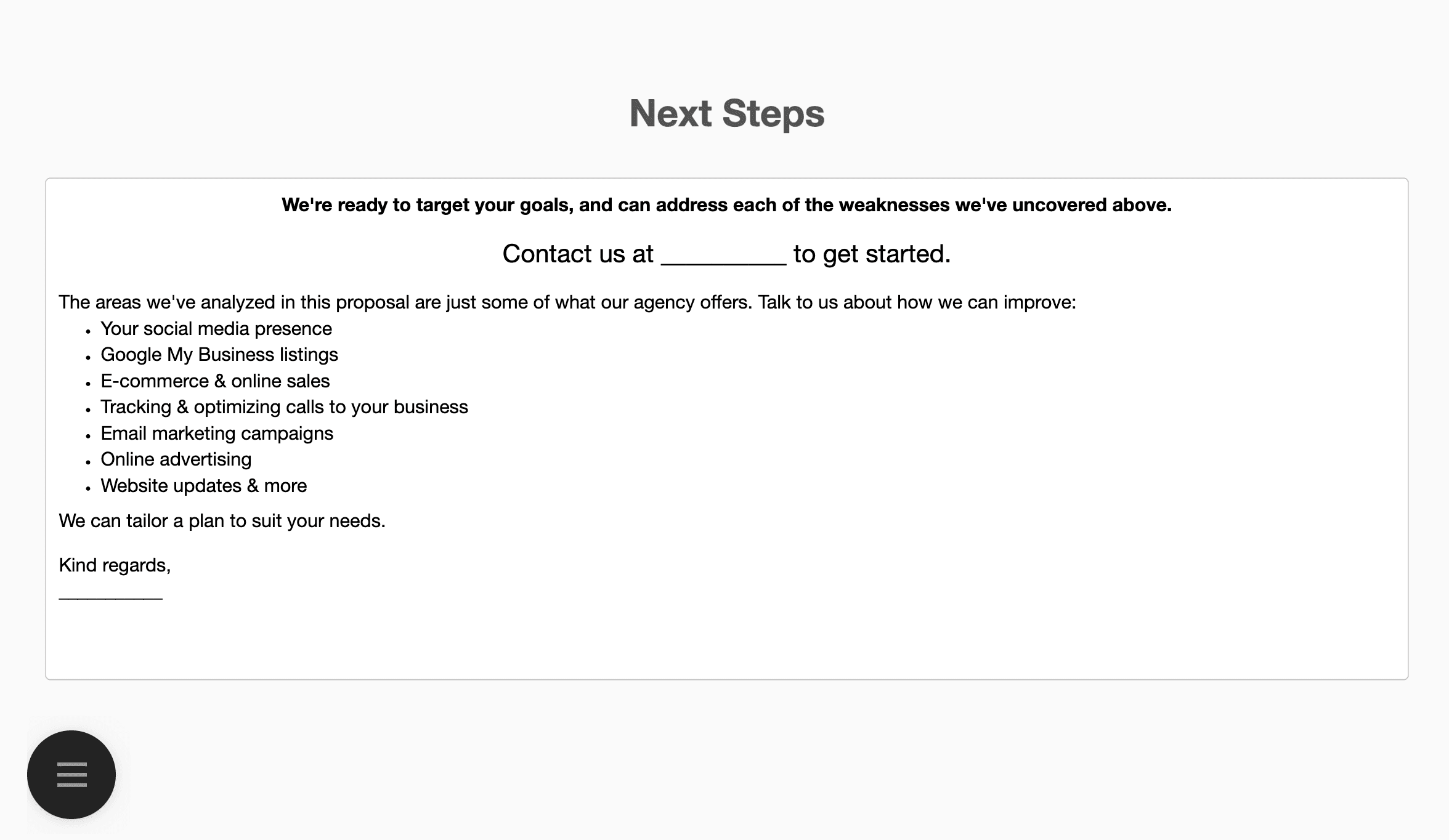
This section could include an overview of the services you provide, the investment required from the lead, some highlights of the benefits clients can expect to see from a well-executed SEO campaign, and a CTA with your contact information.
Once you’ve made all the necessary edits and personalized your proposal report, simply click the share button and choose to download it as a PDF, send an email right from AgencyAnalytics, or share a link with the new prospect.
Agency Tip: Your services should be specific and quantifiable—for example, if you’re creating content for the client, outline exactly how many pages or blog posts you’ll deliver each month.
Be sure to end your lead generation report with a clear call-to-action (CTA) that tells the prospect exactly what to do to get started, motivating them to take immediate action.
For example:
Take the Leap Towards Unprecedented Growth
We have tailored a plan that aligns perfectly with your goals and challenges. Now it’s time to set this plan into motion and witness the transformative impact on your business.
Contact us today to schedule a no-obligation consultation with our team.
📞 Call us at (123) 456-7890
📧 Or email us at contact@ouragency.com
Let's embark on this journey towards success together. Your growth is our mission.
This type of CTA is successful, as it:
Creates a sense of urgency with direct messaging,
Spells out the next steps to take by providing multiple avenues of contact, and
Indicates a partnership approach, which is appealing and empowering.
Now that we’ve discussed what’s included in a lead generation report and its many benefits for scalable growth let’s look at how to quickly create one inside AgencyAnalytics.
How To Set Up Proposal Templates in AgencyAnalytics
This next section will show you how our report builder tool easily creates lead generation templates by repurposing a client report into a proposal.
Follow the step-by-step instructions below, or watch the webinar on how to use AgencyAnalytics’ lead generation software here:
Step 1. Create an Account
To get started, after you create an account and then use "Add Client" to create a set of reports and dashboards for the prospect to showcase what your agency can bring to the table.
To do this, head to the templates section:
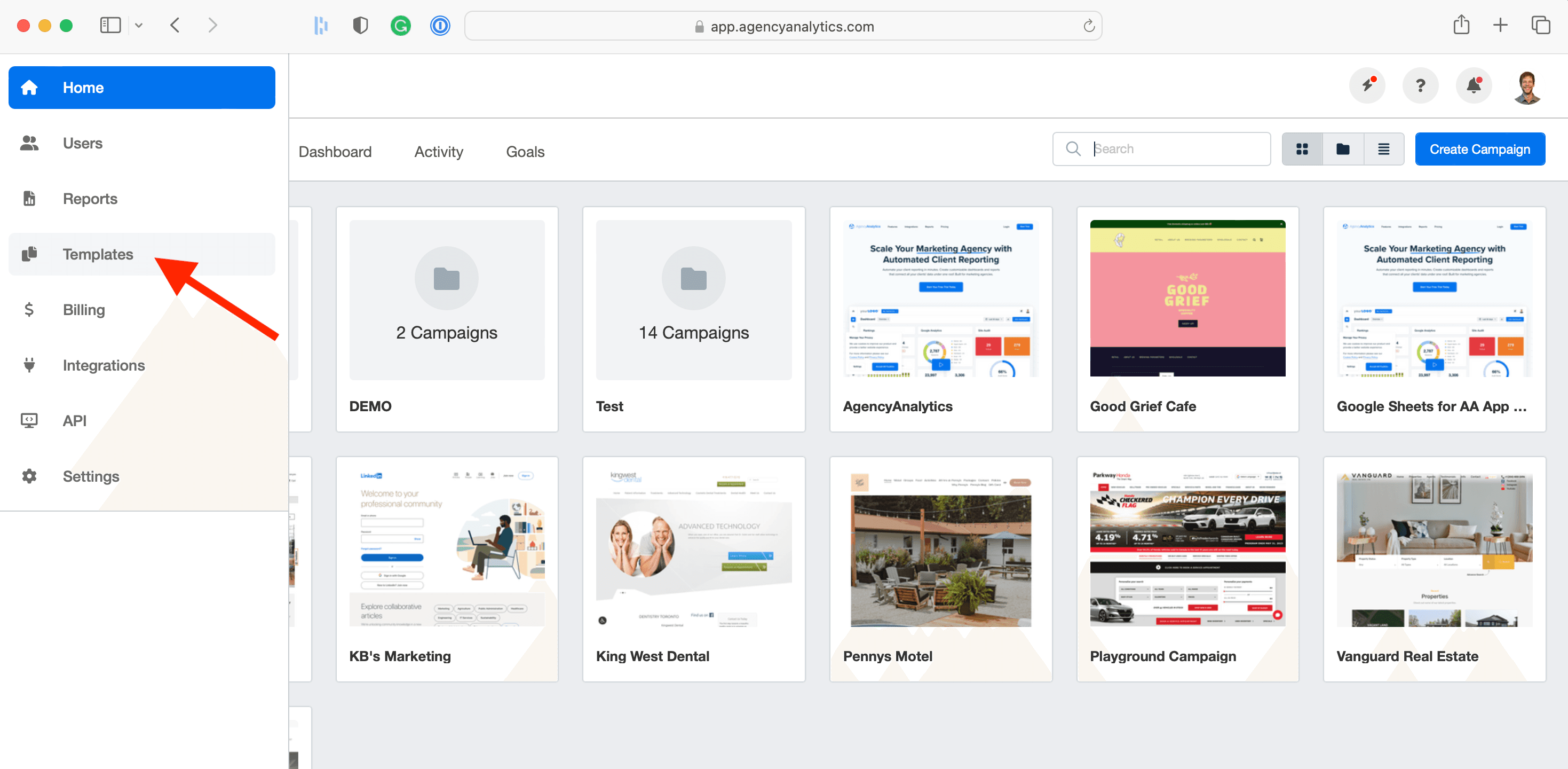
Step 2. Create a Template
Next, click “Report” on the Top section, and select “Create Template” on the top right-hand side:

Step 3. Start from a Template
After that, choose “Start From a Template” from the list of options:
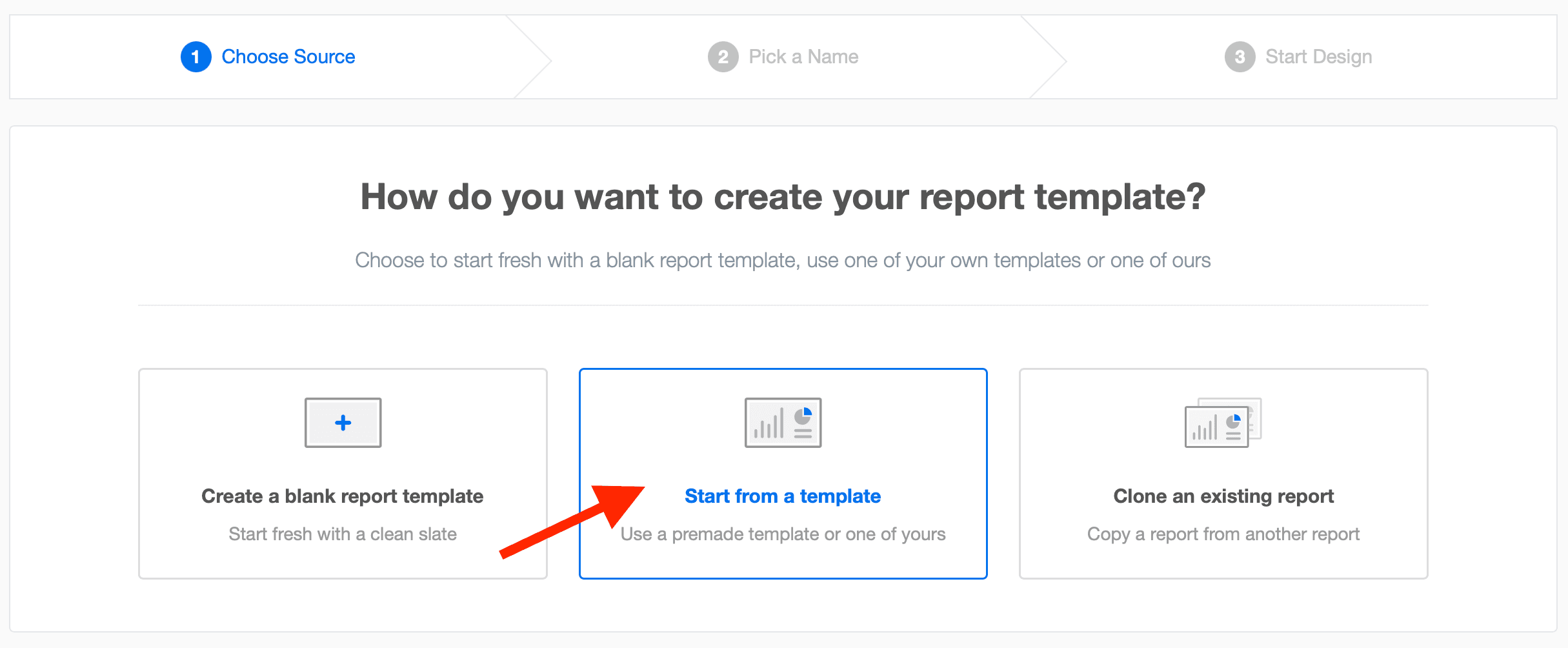
Step 4. Choose Your Type of Template
Scroll down to “Lead Gen Template” and hit “Continue”.

Step 5. Personalize, Personalize, Personalize!
After choosing a name for your template, you’ll be in the report builder, where you can add sections and customize the proposal as you see fit.
For example, to edit the proposal summary, simply use a standard text editor, and for the other sections, select “Add Section” to include the marketing channels you want to show. The drag-and-drop editor makes it easy to configure your entire proposal and save the template for every client.
AgencyAnalytics is a lead generation software built for agencies that not only retains your clients but wins them too.
The Takeaway
Lead generation is an essential ingredient to scaling. Whether you choose to create a lead generation report from scratch or start with a proposal template, it’s important to personalize your proposals, use the prospects’ data to extract insights, and track their activity so you can follow up at the right time.
A well-designed proposal allows agencies to scale consistent prospecting and immediately demonstrate credibility and show prospects exactly how the agency plans to solve its unique business challenges.
If you’re ready to improve your prospecting process and land more clients for your agency, you need the right lead generation tools to back you up. Start your free 14-day trial with AgencyAnalytics to unlock a scalable system that both wins and retains your clients.

Written by
Melody Sinclair-Brooks brings nearly a decade of experience in marketing in the tech industry. Specializing in B2B messaging for startups and SaaS, she crafts campaigns that cut through the noise, leveraging customer insights and multichannel strategies for tangible growth.
Read more posts by Melody Sinclair-BrooksSee how 7,000+ marketing agencies help clients win
Free 14-day trial. No credit card required.




